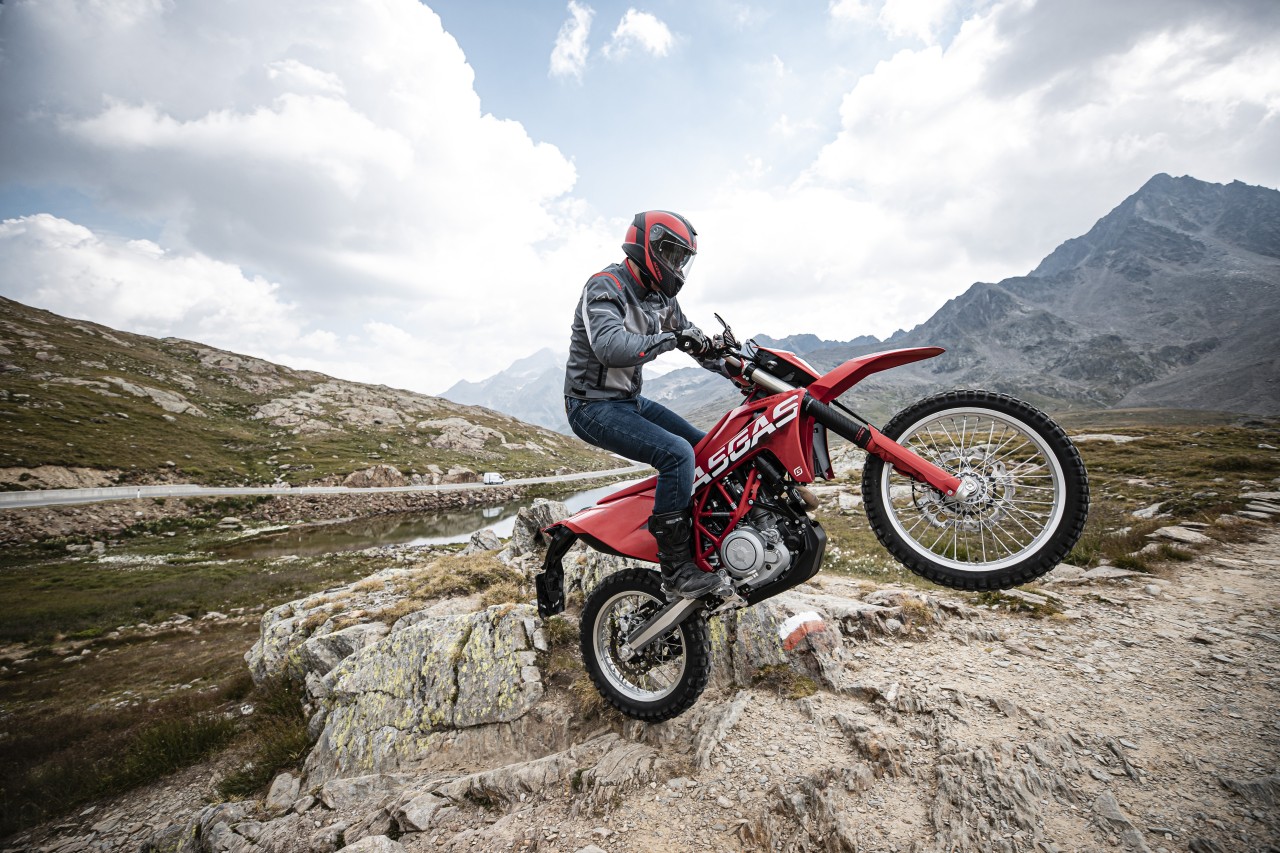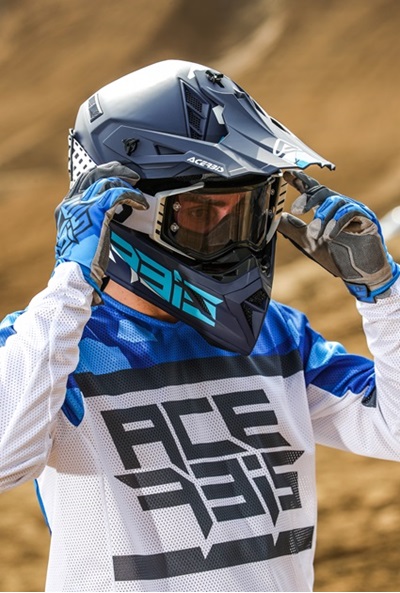How to choose a motorbike for a beginner
Choosing your first motorbike is a crucial step in the life of any motorbike novice. The right bike can offer an unforgettable experience and a safe start on two wheels. Let's break it down step by step. It's important that your motorcycle matches your needs. Choosing the right bike is a bit like choosing a date. You need it to fit, be reliable and bring you joy. But unlike a partner, you can choose a bike purely on looks and performance without feeling superficial! So how do you choose a bike for a beginner?

Will you be riding mostly around town, on long trips, or are you planning an off-road ride?
Choosing your first bike isn't just about how it looks or how much horsepower it has. First you need to think about what kind of life you plan to live with it. A motorbike is much more than just a means of transport - it's your new travelling partner, so it's important to be clear about what you expect from it.
Try to imagine the journeys you'll take. Are you a typical urban rider who will be taking to the streets and dodging endless traffic jams? Then you'll need a lightweight, easy-to-ride bike that weaves through cars like a fish through water. A scooter or a lightweight naked bike will be your ideal companion.
If you're tempted by long trips where you want to enjoy the scenic scenery, look for something more comfortable. Travel enduros or sport-touring bikes will give you comfort even over longer distances. Think of the movie "Easy Rider" and imagine the freedom!
What about the terrain? Are you an adventurer at heart who longs to explore forest paths, dirt trails and mountain passes? Then you need a rugged bike with a higher suspension travel. An enduro or adventure bike will allow you to tackle any terrain and leave only clouds of dust in your wake.
Types of bikes suitable for beginners
.jpg)
Naked bikes - Standard bikes, also known as "naked bikes", are such versatile, practical machines that can do almost anything. Think of them as the Swiss Army knife of motorcycles - they have everything you need and nothing extra. These bikes have an upright and comfortable seating position, which means you won't feel like a banana in your school lunch after two days in your backpack.
Travel Enduros - If you've got a bit of Indiana Jones in you and a thirst for adventure, then travel enduros are for you. These bikes are designed to handle both tarmac and unpaved roads. They're like those good old boots you take on any tour - comfortable, reliable and always ready.
Scooters - For those who mainly want to ride around town and don't want to worry about congested parking lots and traffic jams, scooters are the perfect choice. Scooters are lightweight, easy to handle and have lower fuel consumption than most motorcycles. They're like little urban ninjas that weave in and out of cars and get you where you need to go without breaking a sweat (well, at least no more than necessary).
Sport Bikes - If you've ever dreamed of becoming the next Valentino Rossi, but also realize you're just a beginner, lightweight sport bikes are the way to go. Yes, sport bikes may not be traditionally recommended for beginners, but there are models that are perfect for those who want to get a taste of adrenaline on two wheels.
Each type also requires specific equipment, such as a motorcycle helmet - choose it in accordance with the machine you'll be riding. Will it be a motocross or enduro helmet, an integral helmet or perhaps an open helmet for the city?
Engine capacity for a beginner
When choosing your first bike, it's important to consider the power you'll need and, more importantly, be able to handle. Engine size is one of the key factors that will affect how confident and safe you feel on your bike. For beginners, the ideal engine size is between 125cc and 300cc. A powerful bike is not a good choice for a beginner. Why this range?
What does engine capacity mean?
Engine displacement, often referred to as cubic capacity, refers to the amount of space in the engine cylinders where the fuel/air mixture is burned. A larger engine capacity usually means more power, but it also means more weight and more difficult handling.
125cc: This is often recommended as a first bike for beginners. 125cc motorcycles are usually light, easy to handle and have enough power to learn basic skills, but are not too fast or dangerous.
250cc: If you have a little more experience or are a bigger and heavier rider, a 250cc bike may be a good choice. These bikes provide more power than 125cc, but are still relatively easy to ride.
300cc: Some beginners may consider this category as well, especially if they plan to ride more on the highways or need a bike that can handle higher speeds. These bikes are still considered suitable for beginners as long as they are careful and responsible.
How to decide?
When choosing a motorcycle with the ideal engine size, it is important to consider not only the technical specifications, but also personal preferences and intended use. Try out a few different models to get an idea of how different bikes feel. Remember that a beginner's bike should be a teacher first and foremost - to help you learn to ride safely and confidently.
Weight and handling
When you think of your first motorbike, you probably see a machine that will give you a sense of freedom and excitement to ride. However, to ensure your experience is positive and safe, it's important to focus on the weight and handling of the bike. A lighter motorcycle is like a beginner's best friend - always close by, reliable and ready to help.
.jpg)
Why is lower weight important?
Easier handling - A lighter bike means you can handle it more easily, whether it's parking, turning or pushing. Imagine trying to park a big, heavy machine in a crowded parking lot - that's a challenge you don't need as a beginner. With a lighter bike, it's a piece of cake.
Better control - The lighter weight of the bike means you have better control over its movement, especially at low speeds or in city traffic. You won't feel like a rodeo rider when maneuvering through traffic or taking off at traffic lights, but like a seasoned rider.
Gaining confidence - Your first bike should be your teacher, guiding you and helping you gain confidence on two wheels. A lighter bike will allow you to gain the skills and confidence you need more quickly. You won't fear every stop or start and will gradually become a more confident rider.
Safety - A lightweight bike is easier to handle, which means you have a better chance of avoiding unexpected obstacles and handling emergencies. At the start of your motorcycling career, you want to avoid unnecessary crashes and collisions, and a lighter bike can help you significantly.
How to choose the right weight?
When choosing your first motorcycle, it's important to try out a few models and see how they feel. A lighter bike should give you a feeling of control and confidence. Try to imagine how you will handle it in different situations - parking, turning in place or riding in city traffic.
Remember, your first bike doesn't have to be the lightest on the market, but it should be light enough that you feel comfortable and safe on it. As you gain experience and skill, you can opt for heavier and more powerful models later on.
Safety features.
When choosing your first motorbike, safety comes first. Modern technology allows us to ride safer than ever before, so you should choose bikes that are equipped with top safety features. Some of these technologies can be the difference between an accident and a safe return home.
ABS (Anti-lock Braking System)
ABS is a lifeline for all motorcyclists, especially beginners. This system prevents the wheels from locking up during hard braking, allowing you to maintain control of your bike even in a crisis situation. Imagine you're riding on a wet road and suddenly have to stop. Without ABS, the wheels could lock up and you'd be sliding down the road like ice. With ABS, you have a chance to stop safely and avoid an accident. At the same time, you can always use good quality motorcycle clothing such as a motorcycle jacket, motorcycle pants and motorcycle boots. For an even greater sense of safety, you'll appreciate motorcycle pads.
Traction control
Traction control is another great tool, especially if you ride in a variety of conditions. This system monitors the rotation speed of the wheels and if it detects that one of them is losing grip (for example, on a wet or sandy road), it will adjust the engine power to help you maintain stability. It's like having an invisible guardian angel watching over your ride and stepping in when things get complicated.
High-quality lighting
Seeing and being seen is a basic rule of road safety. Modern LED bike lights provide better visibility than traditional halogen bulbs. They ensure that you can see well in all conditions, while also allowing you to see the road ahead better. Quality lighting can mean the difference between spotting an obstacle early and having an accident.
Cost and maintenance: think of the future
When you're deciding to buy a motorcycle, it's easy to get caught up in its glossy curves and performance numbers. But don't forget the practical side of things - the cost of maintenance and operation. Some models can be more expensive to maintain, which can get pretty expensive over time.
Frequency of service
Every bike requires regular maintenance, but some models require more frequent service visits than others. Before you buy, find out how often service visits are required and what the cost is. Some models may have more expensive servicing due to more complex designs or less available spare parts.
Spare parts
The availability and cost of spare parts is another important factor. Some exotic brands may have limited parts availability, which can mean longer waiting times and higher costs. Conversely, more common models usually have readily available and affordable spare parts and motorcycle accessories. It pays to invest in a bike that is reliable and has good parts availability - your wallet will thank you.
Test ride - nothing like personal experience
.jpg)
Now that you've got a few favourites on your list, it's time for a test drive. Nothing gives you a better idea of how a bike feels than actually getting on it and hitting the road.
Comfort
Pay attention to how the bike feels when you test ride it. Is the seat comfortable? Can you reach all the controls easily? How do you feel after a long ride? Comfort is key because you'll be spending a lot of time on the bike and you want to feel good.
Handling
Try the bike in a variety of situations - in city traffic, on the motorway and on winding roads. How easy is it to manoeuvre? Is it stable at high speeds? How does it respond to your commands? Handling is essential for your safety and driving pleasure.
The overall feel
Each bike has its own character and feel. When test riding, focus on the overall feel of the bike. Do you feel confident and comfortable on it? Do you enjoy the ride? If so, you've found your two-wheeled partner.
Conclusion
Safety features, maintenance costs and a test ride are essential steps in choosing your first motorcycle. Modern safety technologies like ABS, traction control and quality lighting can greatly help you stay safe on the road. Considering maintenance costs and parts availability will save you a lot of worry and money in the long run. Finally, a test ride will give you an invaluable insight into how the bike actually feels. With these tips, you'll be well on your way to finding a bike that will bring you joy, safety and a great experience every mile.
 PLASTICS
PLASTICS airbox and airbox covers
airbox and airbox covers NUMBER PLATE
NUMBER PLATE LOVER FORK COVERS
LOVER FORK COVERS INGNITION & CLUTCH COVER
INGNITION & CLUTCH COVER TANK COVER
TANK COVER MUD FLAP
MUD FLAP SKID PLATES
SKID PLATES FRAME PROTECTOR
FRAME PROTECTOR HEADLIGHT MASK
HEADLIGHT MASK SIDE PANELS
SIDE PANELS TAIL LIGHT FENDER
TAIL LIGHT FENDER FRONT FENDER
FRONT FENDER RADIATOR SCOOPS
RADIATOR SCOOPS REAR FENDER
REAR FENDER UNIVERSAL FENDER
UNIVERSAL FENDER BRAKES
BRAKES BRAKE DISCS & BOLTS
BRAKE DISCS & BOLTS BRAKE PADS
BRAKE PADS CALIPERS & BRAKE PUMPS
CALIPERS & BRAKE PUMPS BRAKE PEDAL
BRAKE PEDAL BRAKE HOSE
BRAKE HOSE DISC COVER
DISC COVER ENGINE PARTS
ENGINE PARTS GASKETS & SEALS
GASKETS & SEALS CARBURETOR
CARBURETOR BEARINGS
BEARINGS OIL PLUG
OIL PLUG PISTON SETS
PISTON SETS TIMING CHAINS
TIMING CHAINS CLUTCH & ACCESSORIES
CLUTCH & ACCESSORIES CYLINDER HEAD
CYLINDER HEAD engine covers
engine covers WATER PUMP
WATER PUMP FILTERS
FILTERS AIR FILTER COVER
AIR FILTER COVER OIL FILTER
OIL FILTER NET AIR FILTER
NET AIR FILTER AIR FILTER
AIR FILTER FUEL FILTER
FUEL FILTER RADIATOR
RADIATOR RADIATORS
RADIATORS RADIATOR LOUVERS
RADIATOR LOUVERS RADIATOR BRACES
RADIATOR BRACES RADIATOR HOSES
RADIATOR HOSES WHEELS
WHEELS BEARINGS
BEARINGS SPOKES
SPOKES SPACERS
SPACERS NUTS
NUTS WHEELS & RIMS
WHEELS & RIMS TPS SENSOR COVER
TPS SENSOR COVER SWINGARM & LINKAGE
SWINGARM & LINKAGE LINKAGE KIT
LINKAGE KIT KETTENBLOCK
KETTENBLOCK LINKAGE COVERS
LINKAGE COVERS SWINGARM PROTECTION
SWINGARM PROTECTION CABLES
CABLES TANKS
TANKS ADDITIONAL TANKS
ADDITIONAL TANKS TANK CAPS
TANK CAPS TANK VALVES
TANK VALVES TANK PARTS
TANK PARTS LEVERS AND PERCH
LEVERS AND PERCH SHIFT LEVERS
SHIFT LEVERS SPARK PLUG
SPARK PLUG  STEERING
STEERING HANDLEBARS
HANDLEBARS HANDGUARDS
HANDGUARDS  GRIPS
GRIPS CLAPS
CLAPS CLAMPS
CLAMPS THROTTLE TUBE
THROTTLE TUBE STEERING NECK
STEERING NECK CROSSBAR PAD
CROSSBAR PAD HANDLEBAR ACCESORIES
HANDLEBAR ACCESORIES HANDGUARD ACCESSORIES
HANDGUARD ACCESSORIES GRIP ACCESSORIES
GRIP ACCESSORIES CHAIN SET
CHAIN SET FRONT SPROCKETS
FRONT SPROCKETS SPROCKETS & SCREWS
SPROCKETS & SCREWS CHAINROLLER
CHAINROLLER SPROCKET COVERS
SPROCKET COVERS  ke kolečkům
ke kolečkům CHAIN GUIDES
CHAIN GUIDES BOLT SETS
BOLT SETS SEATS
SEATS SEAT
SEAT SEATFOAM
SEATFOAM SEAT COVER
SEAT COVER FOOTPEGS
FOOTPEGS FOOTPEGS
FOOTPEGS SPRINGS & PINS
SPRINGS & PINS PROTECTORS
PROTECTORS HEADLIGHTS
HEADLIGHTS SHOCK ABSORBERS
SHOCK ABSORBERS SIMERINGS & DUSTERS
SIMERINGS & DUSTERS SET OF BUSHINGS
SET OF BUSHINGS bleeder screw
bleeder screw sleeves for forks
sleeves for forks rear shock sleeves
rear shock sleeves REAR SHOCK ATTACHMENT
REAR SHOCK ATTACHMENT LAUNCH HELPER
LAUNCH HELPER EXHAUST
EXHAUST EXHAUST PROTECTION
EXHAUST PROTECTION COTTON WOOL
COTTON WOOL PLUGS
PLUGS HEAT-RESISTANT FOIL
HEAT-RESISTANT FOIL CONNECTING RUUBBER
CONNECTING RUUBBER SPRINGS
SPRINGS REPAIR KITS
REPAIR KITS SILENTBLOCK
SILENTBLOCK



 HELMETS
HELMETS FULL FACE
FULL FACE FLIP-UP
FLIP-UP ADVENTURE
ADVENTURE OPEN
OPEN JUNIOR
JUNIOR RETRO
RETRO women's
women's ACCESSORIES
ACCESSORIES GOGGLES
GOGGLES GLASS, TEARS OFF...
GLASS, TEARS OFF... PROTECTION
PROTECTION CHEST PROTECTORS
CHEST PROTECTORS NECK BRACES
NECK BRACES KIDNEY BELTS
KIDNEY BELTS ELBOW PROTECTORS
ELBOW PROTECTORS KNEE GUARDS
KNEE GUARDS BACKBONE
BACKBONE BODY ARMOUR
BODY ARMOUR JUNIOR
JUNIOR BOOTS
BOOTS travel
travel ANKLE
ANKLE ENDURO
ENDURO JUNIOR
JUNIOR soles and more
soles and more Boots
Boots on a scooter
on a scooter JERSEYS
JERSEYS JUNIOR
JUNIOR JACKETS
JACKETS ENDURO
ENDURO women
women REFLECTIVE
REFLECTIVE PANTS
PANTS ENDURO
ENDURO TEXTILIE
TEXTILIE  jeans
jeans summer
summer Sweatpants
Sweatpants GLOVES
GLOVES WINTER
WINTER ENDURO
ENDURO summer
summer WATERPROOF
WATERPROOF T-SHIRTS
T-SHIRTS trika-uni
trika-uni Children's T-shirts
Children's T-shirts Mini T-shirts
Mini T-shirts SOCKS
SOCKS WATERPOOF GEAR
WATERPOOF GEAR Headwear
Headwear HAT
HAT SWEATSHIRT
SWEATSHIRT shorts
shorts friee time
friee time SOFT PANTS
SOFT PANTS VESTS
VESTS Accessories for bikers
Accessories for bikers HOODS
HOODS SCARF
SCARF belts
belts drobnosti
drobnosti THERMO UNDERWEAR
THERMO UNDERWEAR THERMO T-SHIRTS
THERMO T-SHIRTS THERMO PANTS
THERMO PANTS THERMO KNEE SOCKS
THERMO KNEE SOCKS MEFO MOUSSE
MEFO MOUSSE MOUSSE GEL
MOUSSE GEL MOUSSE KIT
MOUSSE KIT 10"
10" 12"
12" 14"
14" 16"
16" 17"
17" 18"
18" 19"
19" 20"
20" 21"
21" TUBE
TUBE 4"
4" 5"
5" 6"
6" 8"
8" 9"
9" 10"
10" 12"
12" 13"
13" 14"
14" 15"
15" 16"
16" 17"
17" 18"
18" 19"
19" 21"
21" 22"
22" 23"
23" HALTERS
HALTERS MX TIRE
MX TIRE 10"
10" 12"
12" 14"
14" 15"
15" 16"
16" 17"
17" 18"
18" 19"
19" 20"
20" 21"
21" ENDURO TIRE
ENDURO TIRE ROAD TIRE
ROAD TIRE 15"
15" 23"
23" 4"-6,5"
4"-6,5" 8"
8" 13"
13" TOOLS
TOOLS Wrenches, hooks, screwdrivers
Wrenches, hooks, screwdrivers TIRE LEVERS
TIRE LEVERS  CHAIN BREAKERS
CHAIN BREAKERS Preparations for shocks
Preparations for shocks Preparations for wheels
Preparations for wheels Engine preparations
Engine preparations Preparations for bearings
Preparations for bearings OTHER MOTO TOOLS
OTHER MOTO TOOLS GRAPHICKITS, NUMBERS
GRAPHICKITS, NUMBERS Canisters, measuring cups
Canisters, measuring cups TRANSPORT
TRANSPORT CARPETS
CARPETS MOTORCYCLE COVERS
MOTORCYCLE COVERS HOURMETER
HOURMETER helpers for track and training
helpers for track and training STAND
STAND HYDRATION BAGS
HYDRATION BAGS PIT BOARD, MARKER
PIT BOARD, MARKER MOTO LUGGAGE
MOTO LUGGAGE BACKPACKS
BACKPACKS WAIST PACKS
WAIST PACKS FORK OIL
FORK OIL AIR FILTER OIL
AIR FILTER OIL CHAIN LUBES
CHAIN LUBES COOLANT FLUID
COOLANT FLUID BRAKE FLUID
BRAKE FLUID CLEANER AND IMPREGNATION
CLEANER AND IMPREGNATION additives
additives VOUCHERS
VOUCHERS KEYCHAINS
KEYCHAINS WRISTBANDS
WRISTBANDS STAND
STAND PLATE
PLATE BOOK
BOOK WEAR SALE
WEAR SALE HELMETS SALE
HELMETS SALE LEVERS SALE
LEVERS SALE MTB JERSEY
MTB JERSEY MTB PANTS
MTB PANTS bike bags
bike bags cyclo kidney
cyclo kidney MTB HANDGUARDS
MTB HANDGUARDS MTB ACCESSORIES
MTB ACCESSORIES Vlasta Chalupný
Vlasta Chalupný




.jpg)
.jpg)
.jpg)







